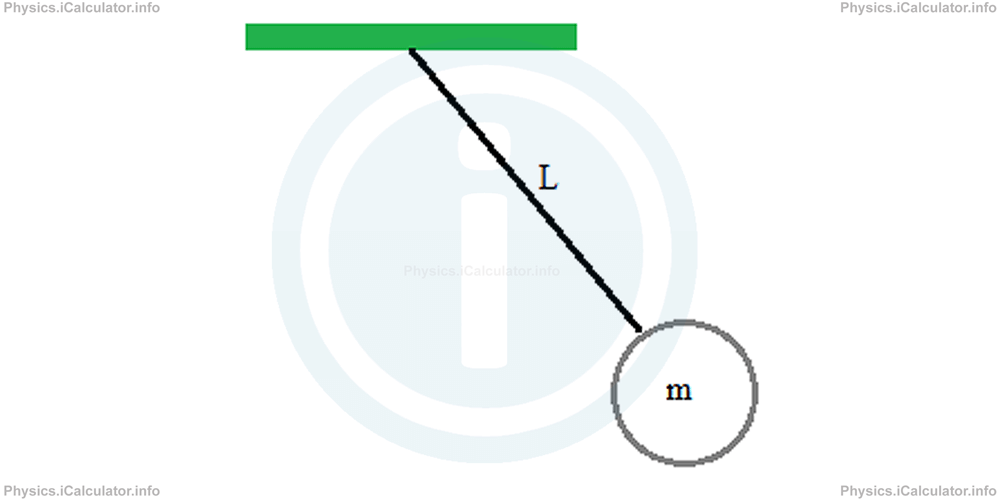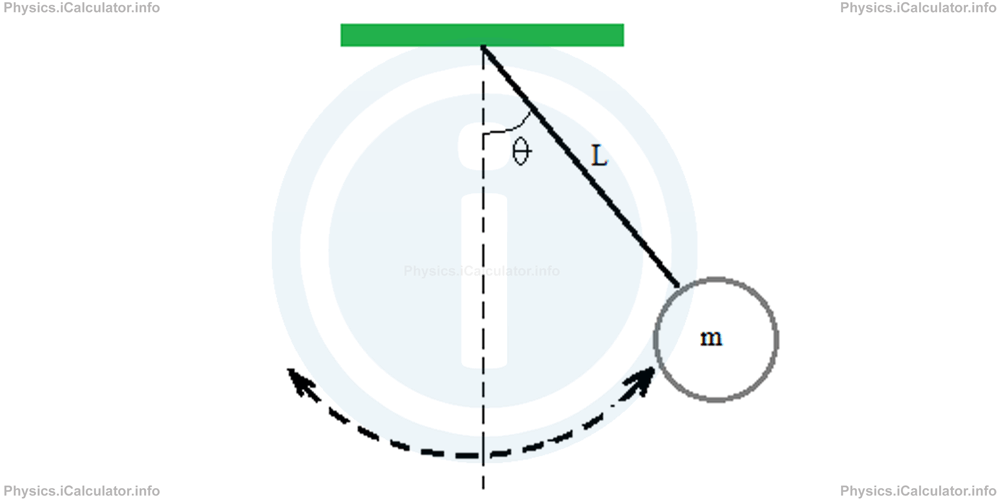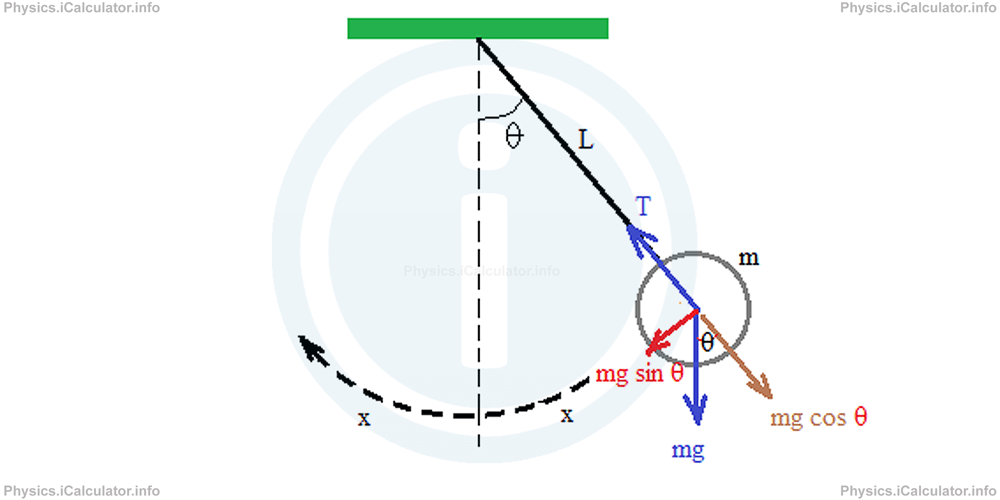Menu
Physics Lesson 10.2.3 - Angular SHM. Simple Pendulum
Please provide a rating, it takes seconds and helps us to keep this resource free for all to use
Welcome to our Physics lesson on Angular SHM. Simple Pendulum, this is the third lesson of our suite of physics lessons covering the topic of Pendulums. Energy in Simple Harmonic Motion, you can find links to the other lessons within this tutorial and access additional physics learning resources below this lesson.
Angular SHM. Simple Pendulum
As stated in the previous tutorial, there is another type of SHM besides the linear SHM. It is known as Angular Simple Harmonic Motion and its simplest case known as "simple pendulum".
A simple pendulum consists of a small mass m otherwise known as bob, attached on a light and non-elastic string (thread) of length L tied to a fixed and rigid support as in the figure below.

When the bob is as in the position shown in the figure, the pendulum is not in equilibrium. The bob attracted by gravity tries to stay as low as possible and therefore, the pendulum tends to get a stable vertical position. That's why it swings several times before stopping at vertical position. Therefore, it is appropriate to study the time needed for one swing (period) in order to obtain useful information about the characteristics of this periodical motion.

Let's denote by θ the initial angle formed by the string and the vertical position. There are two forces acting on the bob: the gravitational force Fg = m × g and the tension force T of the string. Since these two forces have not opposite directions, they don't cancel each other. Thus, a non-zero resultant force will appear in the swinging direction as in the figure below:

This non-zero resultant force
is known as restoring force. It is responsible for the swinging process. (The sign minus indicates that the restoring force is in the opposite direction to the displacement x. It is not written in the figure above to avoid confusion).
The angle θ is taken very small for two reasons:
- Because the effect of air resistance becomes negligible and the situation becomes very similar to harmonic motion. (As we know, harmonic motion is periodical as well).
- Because for small angles sin θ ≈ θ (in radians). This helps us to simplify the study of pendulum.
Also, we know that the arc x from the initial position of the bob to the vertical position (which in this case represents the displacement), is
Hence, we have
= -m × g × θ
= - m × g × x/L
= -(m × g/L) × x
This equation is similar to the Hooke's Law (spring equation) F = - k × x. The only difference is that here the role of x is played by mg/L.
From the equation of angular frequency in a SHM
= √k/m
we obtain for the period T of oscillations in a SHM
Hence, we substitute k = mg/L in simple pendulum and thus, we obtain for the period of simple pendulum
= 2π × √L/g
From the last equation, we draw the following conclusions:
- A pendulum with a shorter thread (L is small) has a smaller period of oscillation (a smaller numerator decreases the value of fraction). This means the bob in these conditions swings faster than if the pendulum had a longer thread.
- If the pendulum had a higher starting point, the initial angle θ would be greater. Consequently, the displacement x would be greater as well. Also, the restoring force would be greater. However, in absence of air resistance, this would not affect the period of pendulum as period does not depend on the angle θ or displacement x.
- If the bob had a greater weight (or mass), this would not affect the period of pendulum as period is independent from mass of the bob.
- In the above explanation, we have considered the case when the bob is released without any initial speed. If it is pushed at a certain speed, the restoring force increases as we have used an additional force besides the gravity. Thus, the bob makes a greater arc (the angle θ increases). However, this doesn't affect the period of pendulum.
You have reached the end of Physics lesson 10.2.3 Angular SHM. Simple Pendulum. There are 5 lessons in this physics tutorial covering Pendulums. Energy in Simple Harmonic Motion, you can access all the lessons from this tutorial below.
More Pendulums. Energy in Simple Harmonic Motion Lessons and Learning Resources
Whats next?
Enjoy the "Angular SHM. Simple Pendulum" physics lesson? People who liked the "Pendulums. Energy in Simple Harmonic Motion lesson found the following resources useful:
- Angular Feedback. Helps other - Leave a rating for this angular (see below)
- Oscillations Physics tutorial: Pendulums. Energy in Simple Harmonic Motion. Read the Pendulums. Energy in Simple Harmonic Motion physics tutorial and build your physics knowledge of Oscillations
- Oscillations Revision Notes: Pendulums. Energy in Simple Harmonic Motion. Print the notes so you can revise the key points covered in the physics tutorial for Pendulums. Energy in Simple Harmonic Motion
- Oscillations Practice Questions: Pendulums. Energy in Simple Harmonic Motion. Test and improve your knowledge of Pendulums. Energy in Simple Harmonic Motion with example questins and answers
- Check your calculations for Oscillations questions with our excellent Oscillations calculators which contain full equations and calculations clearly displayed line by line. See the Oscillations Calculators by iCalculator™ below.
- Continuing learning oscillations - read our next physics tutorial: Simple Harmonic Motion
Help others Learning Physics just like you
Please provide a rating, it takes seconds and helps us to keep this resource free for all to use
We hope you found this Physics lesson "Pendulums. Energy in Simple Harmonic Motion" useful. If you did it would be great if you could spare the time to rate this physics lesson (simply click on the number of stars that match your assessment of this physics learning aide) and/or share on social media, this helps us identify popular tutorials and calculators and expand our free learning resources to support our users around the world have free access to expand their knowledge of physics and other disciplines.